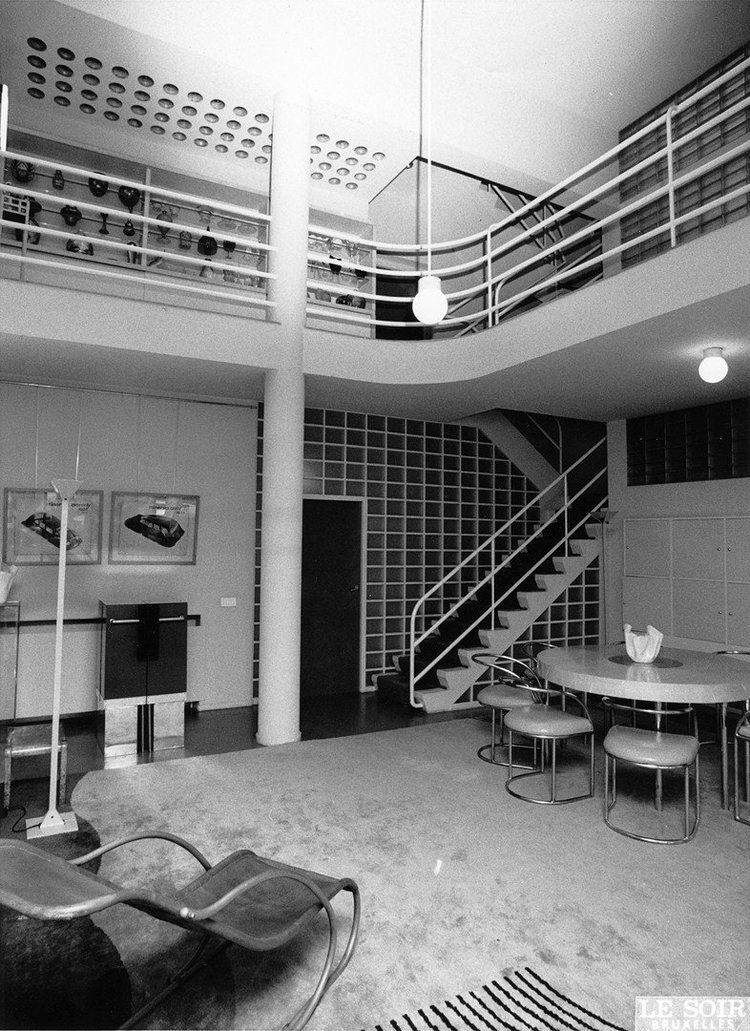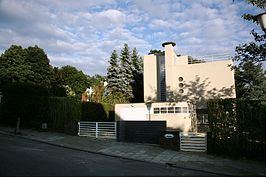Name Louis De | Role Architect | |
 | ||
Died October 21, 1984, Uccle, Belgium | ||
Villa ley louis herman de koninck cryengine3 mm44 sint lucas ghent
Louis Herman De Koninck (31 March 1896 - 21 October 1984) was a Belgian architect and designer.
Contents
- Villa ley louis herman de koninck cryengine3 mm44 sint lucas ghent
- Louis Herman De Koninck Lenglet House Charles Hippolyte Chatelard Subtitled
- Professional activity highlights
- Houses
- Furnitures Glass work tapestries
- Recent exhibitions
- References

One of the leading Belgian architects of the 20th century, De Koninck developed an original form of modernism and constructivism architecture. Not a theorician, L H De Koninck has rooted his design in the in depth understanding of popular architecture developed by farmers on the Belgian sea shore. He spent many years copying these natural design, and maintained a deep sense of them all his life even when expressed through the most modern concepts and breakthrough use of lights and space in the 20's.

The growing corpus of publications on L.H. De Koninck, reflects the increased recognition of the importance of his work for Modern Architecture.

"History makers are often ignored for too long like the Californian architect Rudolf Schindler (1887-1953) whose career runs parallel to that of Louis-H De Koninck; it was only during the sixties that his work was examined for the first time then discovered and eventually revealed.
It is no doubt owing to the detailed study , by the Archive of Modern Architecture in Brussels (since 1968) that De Koninck was mentioned in Michel Ragon's historical work and correctly situated in the "Visual History of Twentieth-Century architecture" in which Dennis Sharp compares the Lenglet Villa, built by De Koninck in 1926, with the houses which Gropius built in Dessau in 1925-1926 and the famous House of Falling Water built about the same time in Bear Run by F.L. Wright (in order to illustrate the fundamental divergence which exist between a striking illustration of European doctrinaire functionalism - closed forms, square plan, endless surfaces of the white envelope - and the stimulated spatial character of American organic architecture based upon daring plan and articulations).
"De Koninck realized some of his most notable works prior to the founding of CIAM; namely his own house (1924), Lenglet House (1926) and Haverbeke house (1927). The Lenglet house in particular rise above the usual level of functionalism. It is one of the finest examples of international architecture in the twenties, on a par with Rietved's Schroeder house (1924) and Le Corbusier's Cook house (1926), without being derivative of either De Stijl movement or the "Esprit Nouveau". Despite some evident foreign influences, it's highly original facade expresses its specific origins within the Belgian architectural tradition"
Louis Herman De Koninck - Lenglet House - Charles-Hippolyte Chatelard (Subtitled)
Professional activity, highlights
1929 Becomes member of the Belgian section of the Congrès International d'Architecture Moderne (CIAM)
Houses
Furnitures, Glass work, tapestries,...
De Koninck has been a very creative a talented creator of furnitures, glass works, tapestries, for his own houses.
1930, He has been the main designer of the CUBEX kitchen, a truly innovative modular and standardized kitchen furniture system, which was a collective creation of the Belgian Members of the CIAM. These Rational Kitchens, have been very popular in the bourgeoisie and installed in many houses in Belgium, they have been discontinued in the late 60's.
Recent exhibitions
Several exhibitions have been held.
2006, Modernism, Victoria & Albert Museum, London Although not an exhibition on himself, LH De Koning's Canneel house was amongst the few large scale picture displayed at the exhibition.
